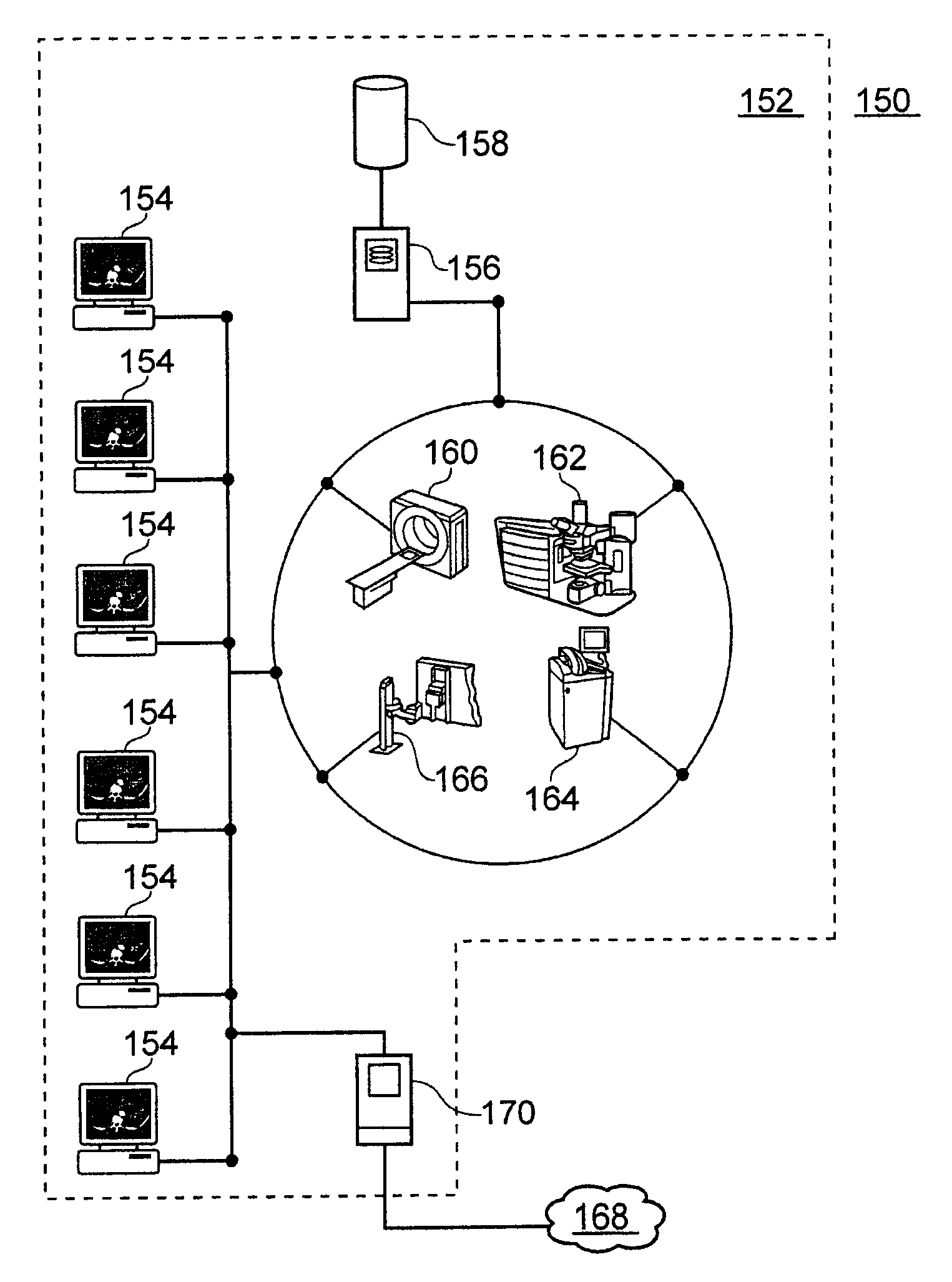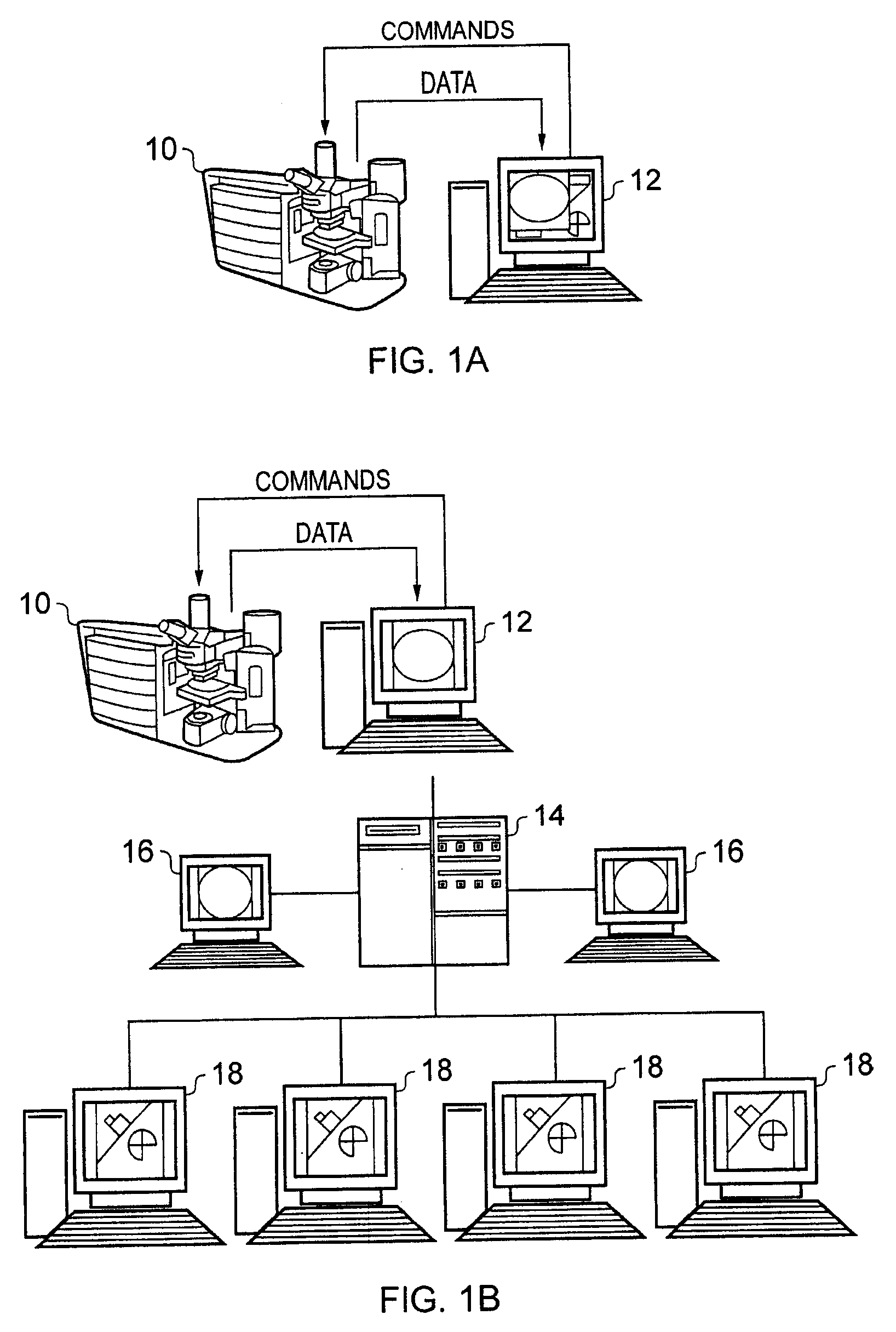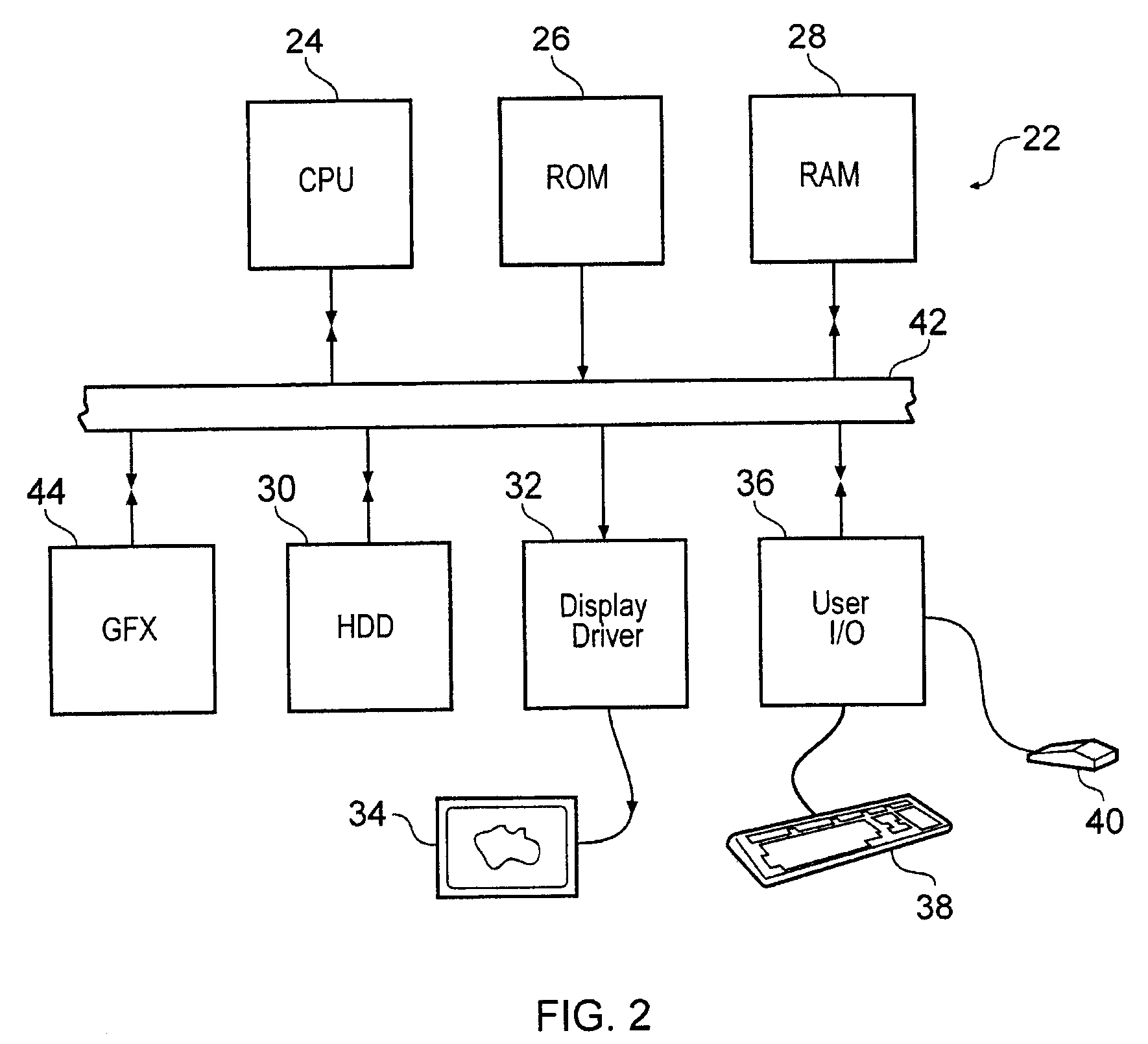Automated Detection of Cell Colonies and Coverslip Detection Using Hough Transforms
a technology of hough transform and cell colony, applied in the field of automatic microscopy, can solve the problems of slow system throughput, inability to use morphological methods that enhance the image of colonies, and inability to achieve the effect of enhancing the image of colonies
- Summary
- Abstract
- Description
- Claims
- Application Information
AI Technical Summary
Benefits of technology
Problems solved by technology
Method used
Image
Examples
Embodiment Construction
[0029]The embodiments of the present invention can be used to automatically detect the location of cell colonies on a specimen slide, as a precursor to automatically finding metaphase cells and associating them with each colony. The location of the colonies is determined by image analysis. The image can be generated by scanning a slide on an automated microscope with motorized x, y and z axes, capturing images at multiple positions with a CCD camera and stitching these images into a mosaic representing the entire scanned area. The embodiments of the present invention may also use a Hough transform to identify the position of coverslips over the specimen slides, whereby the search for the colonies can be limited to the area under the coverslip.
[0030]FIG. 1A schematically illustrates a microscope system for capturing images of a sample. The microscope unit 10 captures digital images of a sample under investigation and the digital images are transferred to computer 12 where they are st...
PUM
 Login to View More
Login to View More Abstract
Description
Claims
Application Information
 Login to View More
Login to View More - R&D
- Intellectual Property
- Life Sciences
- Materials
- Tech Scout
- Unparalleled Data Quality
- Higher Quality Content
- 60% Fewer Hallucinations
Browse by: Latest US Patents, China's latest patents, Technical Efficacy Thesaurus, Application Domain, Technology Topic, Popular Technical Reports.
© 2025 PatSnap. All rights reserved.Legal|Privacy policy|Modern Slavery Act Transparency Statement|Sitemap|About US| Contact US: help@patsnap.com



